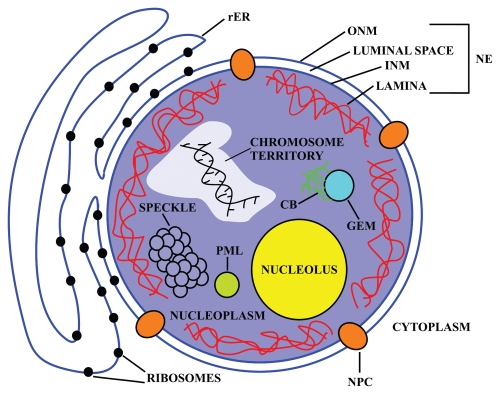Figure 1.
Schematic representation of a cell nucleus showing the main structural components. The nucleoplasm is enclosed by the nuclear envelope (NE), which contains the inner nuclear membrane (INM), luminal space and the outer nuclear membrane (ONM), the nuclear pore complexes (NPC), and the nuclear lamina. The ribosome-studded ONM is contiguous with the rough endoplasmic reticulum (rER), whereas the ribosome free INM faces the nucleoplasm and lamina. The ONM and INM are joined at the NPC. The yeast NE also contains NPCs and is continuous with the rER, but a functional counterpart of the metazoan lamina has not yet been described in yeast. This diagram also depicts some of the subnuclear structures located in the nucleoplasm, namely, nucleolus, chromosome territory, the Cajal body (CB), the promyelocytic leukemia oncoprotein (PML), splicing speckles and gems. Although each of these subnuclear structures represents an independent entity, remarkably, they are highly dynamic both internally and as discrete entities within the nucleus.13,26

